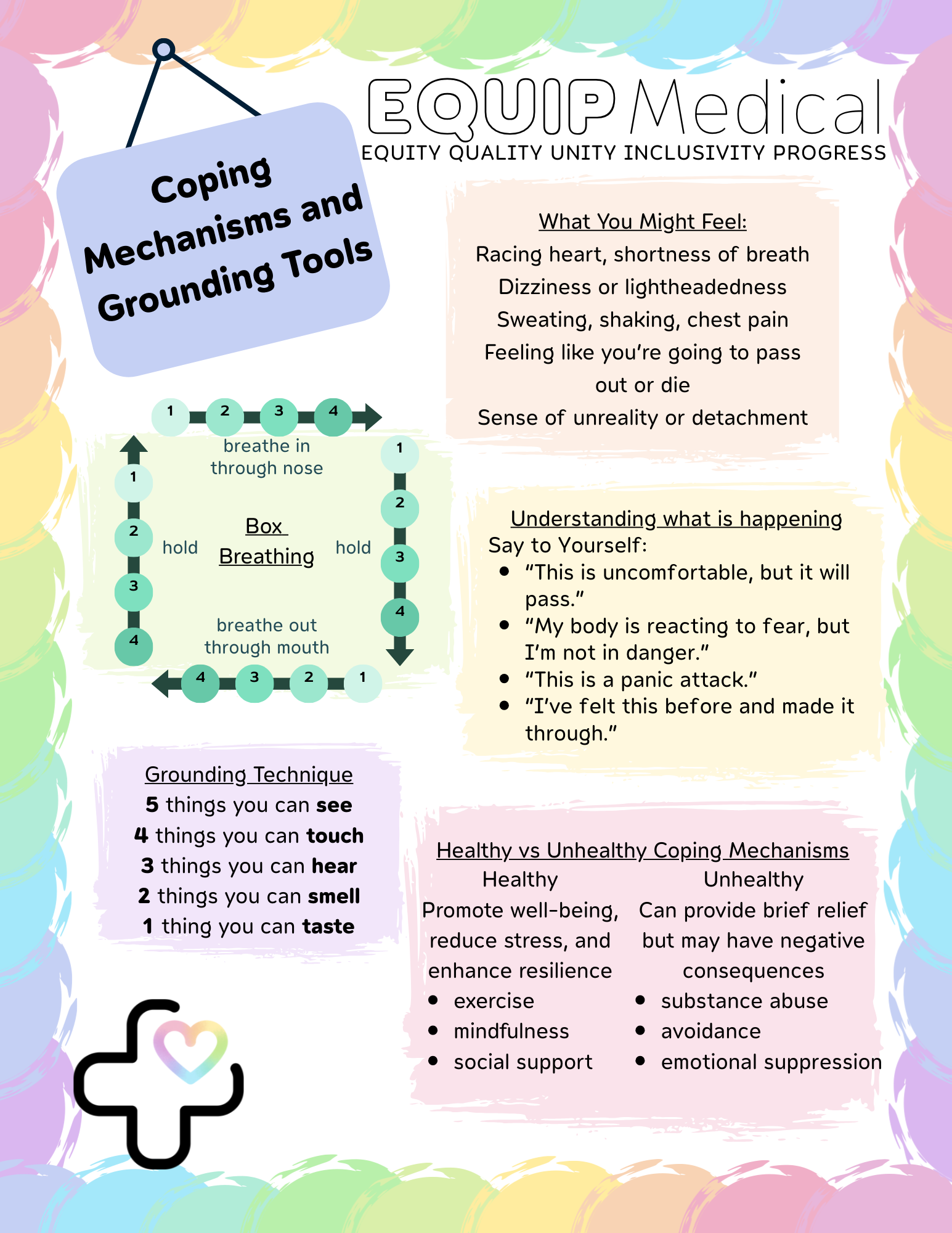Coping Mechanisms and Grounding Tools
When anxiety, panic, or intense stress hits, it can feel like your body is taking over and you're losing control. Your heart races, your chest feels tight, your thoughts spiral, and suddenly it seems impossible to breathe or think clearly. You're not alone in this, and you’re not powerless, either.
We believe everyone deserves simple, practical tools to help manage these moments. Coping mechanisms and grounding strategies can bring you back to the present, regulate your body’s stress response, and remind you that you're safe.
What You Might Feel
When you're experiencing anxiety or a panic response, your body’s fight-or-flight system kicks in. You might feel:
Racing heart or shortness of breath
Dizziness or lightheadedness
Sweating, shaking, or chest pain/tightness
Feeling like you’re going to pass out or die
A sense of unreality or detachment
These symptoms can feel frightening, but they’re your body’s way of trying to protect you. Understanding what’s happening is often the first step toward calming down.
Grounding Yourself in the Present
Grounding techniques help anchor you in the here and now. By focusing on your senses, you interrupt the spiral of racing thoughts and return your attention to what’s real and safe.
Try this 5-4-3-2-1 grounding exercise:
5 things you can see
4 things you can touch
3 things you can hear
2 things you can smell
1 thing you can taste
You can do this anywhere! On a bus, at work, in the middle of a crowded event. It’s a small, discreet tool that can have a big impact.
Box Breathing: Reset Your System
Box breathing is a structured breathing technique that helps regulate your nervous system and calm the body:
Breathe in through your nose for 4 seconds
Hold your breath for 4 seconds
Breathe out slowly through your mouth for 4 seconds
Hold again for 4 seconds
Repeat this cycle a few times. By slowing your breath, you signal to your body that you're safe, which can reduce the intensity of anxiety or panic symptoms.
Reassuring Yourself
Sometimes, the most powerful grounding tool is talking to yourself with compassion. Try saying:
“This is uncomfortable, but it will pass.”
“My body is reacting to fear, but I’m not in danger.”
“This is a panic attack, it’s temporary.”
“I’ve felt this before, and I made it through.”
Giving yourself context and reassurance can help reduce fear and restore a sense of control.
Healthy vs. Unhealthy Coping Mechanisms
Not all coping strategies are created equal. Some help you feel better in the moment and support your long-term well-being. Others may numb discomfort temporarily but create more challenges later.
Healthy Coping Tools
Exercise: even gentle movement helps release tension and reset your body
Mindfulness: focusing on the present through meditation, breathing, or body scans
Social support: talking with someone you trust
Unhealthy Coping Tools
Substance use
Avoidance (ignoring problems entirely)
Emotional suppression
It’s normal to reach for whatever brings relief when you’re overwhelmed. But practicing healthy strategies builds resilience and makes future challenges easier to manage.
Why These Tools Matter
Coping mechanisms and grounding techniques aren’t about “fixing” your feelings, they’re about giving you options. They help you ride the wave of intense emotions without feeling like you’re drowning. With practice, these tools become second nature, empowering you to face stressful situations with confidence and clarity.


